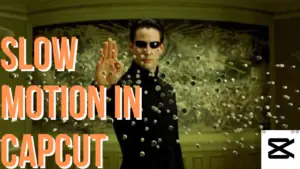Hi there and welcome to our blog post where you will be learning how to add a slow-motion effect to your video using Capcut.
One of the best ways to keep your audience entertained with your content is by pulling up many beautiful effects and transitions.
Slow motions in a video also help to draw attention to a video. Capcut gives you that opportunity to beautify your video by adding slow motion to it.
One thing you must have in mind when adding slow motion or increasing the speed of your video is not to overdo it.
Overdoing it sometimes results in boredom and might make your audience feel bored with watching the video.
- Also Read: How to blur a video background in Capcut
By implication, this means that you have to know the appropriate time to add the slow-mo effect and when to allow the video flow to normal.
So having known this let’s dive into learning how to add the slow-motion effect in our video using Capcut.
Add slow-motion effect using Capcut

Feel free to watch the video below for a better understanding or better still, follow the steps by step guide.
Step 1. Launch Capcut app
To begin the journey of adding slow-motion effects in your video using Capcut you will need to launch the application.
Step 2. Click on a new project
If you have a video that is undergoing editing already you will need to find it in the draft but if it is a new video it means that you will need to create a new project.
Step 3. Add the video you want to add a slow-motion effect to.
Select or add the video clip where you want the slow-mo to take place.
Step 4. Identify slow motion points
At this point, you will need to identify the past of the video where you want the speed of the video to reduce.
Identifying it is very simple. All you need to do is to click on the tool right above the video timeline that has a plus sign.
- Feel free to read: 12 best Capcut templates
Tapping on that icon will leave a brown sticker on the part of the video where your editing playhead is.
Drag or play the video to get to the point where you want the slow motion to stop.
Tap on the icon again to place another brown marker.
These two markers will indicate the start and finishing points of the slow motion.
Step 5. Click on Speed
Having marked the parts of the video where you want the slow-mo to begin and end, the next thing you will have to do is to click on the speed tool.
Two options (Normal and Curve) will appear.
Normal is very simple and easy to use while the curve is for those who are professionals.
Step 6. Click on any speed option
After seeing the available speed options you are welcome to choose any option whether normal or curve. This solely depends on which one is more convenient for you.
Step 7. Drag down any of the round-shaped objects
If you are using the Normal option skip this and go to the next step. But if you are using the Curve option you are required to tap and hold any of the balls to give you an expected desire by dragging the balls to different locations of your choice.
Step 8. Preview your video
When you are done with your slow-motion effect, you can preview the video to know if what you are doing so far was okay with you.
If it is fine then you can go ahead to export your video but if it is not you can go back to the speed tool and play with the available options.
Step 9. Continue with your editing or export the video
Now when you are done and you are satisfied with your slow-motion effect you can continue with your other editing or better still export the video.
Conclusion
If you follow this information, trust me, you can successfully slow or increase the speed of your video for free.
With Capcut you’ve got a very powerful video editor that can allow you to do almost everything.
Hope this was helpful. Feel free to leave your comments.
